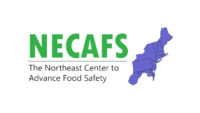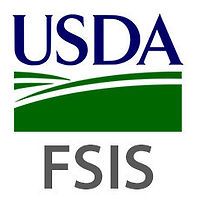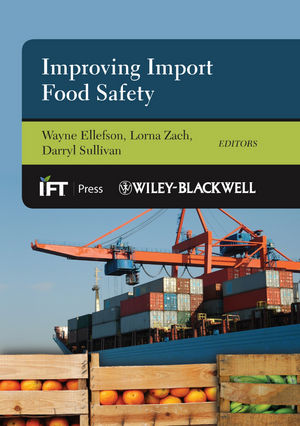Small or Very Small: New Rules from FSMA Create Unique Challenges

Since the new rules for the Food Safety Modernization Act (FSMA) were developed, and especially since the Preventive Controls for Human Food rule was released, food manufacturers of all sizes have been working intensely to determine how to implement them into their culture and new food safety plans. FSMA has been a game changer for businesses from large to very small. Many companies have dedicated staff and other resources to develop a separate FSMA team to coordinate implementation of all the new regulatory requirements to be compliant. This approach has proven effective for large companies, but for those that fall into the small and very small categories (generally, a business with fewer than 500 employees and a business with less than $1 million in total annual sales of human food, respectively, at least in regard to this rule), it has been a challenge.
A lack of awareness is one of the greatest challenges to FSMA compliance for many companies. This can manifest in many ways: ignorance of the law, a lack of understanding of the interpretation of the law or unfamiliarity with how to implement what is required. Obviously, these are not the companies that are involved in industry events such as conferences, webinars and even newsletters. These are not the large food companies but are more likely the small or medium-size companies with smaller distribution channels. Picture a mom and pop company that has been in business for many years, has a dedicated following and does not want to grow beyond their current capacity. This company has no reason to look beyond their four walls at what other organizations are doing. These are the companies that have small teams and no dedicated food safety professional. Many companies have said that they are the only ones they know of that have to be in compliance. For companies like this, their state inspector or a U.S. Food and Drug Administration (FDA) inspector will be the person from whom they will most likely hear about the new FSMA regulations or the only ones they will consider a credible resource.
Countless resources (including financial) have gone into developing both training programs and skilled professionals to strengthen the safety of our food supply. While all food manufacturers have faced great challenges in this sweeping set of rule changes, none have faced more uncertainty, and been more challenged, than those that operate as small and very small food businesses. These businesses tend to be primarily owner operated, working with a lean staff (fewer than five) and unable to dedicate anyone to work solely on FSMA compliance.
There are often two scenarios behind a lack-of-resources issue: financial and workforce. A company that lacks financial resources will be unable to support a food safety and quality professional. They may not be able to provide the necessary training to ensure that they know the applicable laws. A company with a lack of workforce resources will have personnel that know about the laws, but these people are tied up in “firefighting” activities and have no time to plan for the future or dedicate time, energy and mental capacity to developing or updating the necessary programs to ensure FSMA compliance.
Working closely with manufacturers of all sizes, we have witnessed smaller manufacturers face a herculean task to grasp and understand the new FSMA rules. They struggle with understanding whether they are exempt from certain parts of the rules and if so, which ones. Many states have attempted to address this by providing lower-cost training for Preventive Controls-Qualified Individual (PCQI) certificate courses. The Ohio Department of Agriculture invested in Lead Instructor training for several of their food safety team members. This has allowed them to offer Food Safety Preventive Controls Alliance (FSPCA) PCQI courses to small and very small businesses for less than half the average going rate. Additionally, many industry organizations like the American Frozen Food Association invested in staff becoming Lead Instructors of PCQI, offering a highly discounted rate to their members. While this is very helpful for small businesses watching their budgets, the work of creating the food safety plan continues to be seen and experienced as a monumental task for small and very small food companies. So, these very small businesses look to others for additional support in determining how to build a food safety plan that fits their needs.
Small and very small food businesses have been seeking consultants for guidance on FSMA compliance efforts. Consultants who are properly trained and proficient with the FSMA rules come with a price that many small and very small companies just can’t afford, so they look for alternative solutions. Too often, these companies are misled into relying on consultants who may not be as experienced or as informed as they need to be regarding the implementation of the new FSMA rules. Some consultants still mistakenly take the approach of writing Hazard Analysis and Critical Control Points (HACCP) plans or Hazard Analyses and Risk-Based Preventive Controls for small food businesses after meeting with them for a day or less. Some will even write a full food safety plan for a company after a short phone call. A one-size-fits-all approach may be offered with general product templates being used to create these plans. Overworked and time-short managers/owners of small and very small food businesses find these “low cost” plans hard to resist. Even worse are those situations when the consultant will simply write an HACCP plan for the company from a template without spending any time with the manufacturer.
Say What You Do
Developing a food safety plan is a process that requires the involvement of the key people in the food business and takes more than a day to review and develop accurately. Not only do small businesses usually fail to implement the food safety plans created by someone else, but those plans often do not reflect the real practices of the food manufacturer and fail to keep the products safe or meet regulatory requirements. This has created a unique challenge for small and very small food businesses that want to do the right thing and be compliant with FSMA but are not sure where to turn for support.
There are several not-for-profit organizations dedicated to working with and supporting the success of small and very small businesses in the United States. These organizations range from independent to local, state and federally funded entities. According to the National Institute of Standards and Technology,1 the Manufacturing Extension Partnership (MEP) is a national system of centers located in all 50 states and Puerto Rico. Each center is a partnership between the federal government and a variety of public or private entities, including state, university and nonprofit organizations. This diverse network, with nearly 600 service locations, has close to 1,300 field staff serving as trusted advisers and technical experts who are ready and able to assist small and midsize manufacturing companies.
MEP centers tailor services to meet critical needs, ranging from process improvement and workforce development to specialized business practices, including supply chain integration, innovation and technology transfer. The MEP’s foundation is its partnerships. Centers are the hub for manufacturers, connecting them with government agencies, trade associations, universities and research laboratories, state and federal initiatives, and a host of other resources to help them grow and innovate. MEP centers have assisted over 25,000 manufacturers supporting the made-in-your-state and made-in-the-USA effort that consumers have requested over the years. Lesser known is the ability to obtain assistance with food safety program development and training through many MEP centers.
The Center for Innovative Food Technology (CIFT), an affiliate of the Ohio MEP, is part of the MEPs across the nation that focus on the food industry.2 CIFT has been working with businesses of all sizes, especially those that may be considered small and very small, for over 20 years. CIFT also manages a cooperative kitchen for food entrepreneurs known as the Northwest Ohio Cooperative Kitchen (NOCK). Very small food businesses can develop their products, undergo multi-level food safety training and manufacture their products safely at this facility with the guidance of CIFT staff. As part of the assistance received, CIFT’s food safety training programs for small and very small businesses include basic food safety training, Current Good Manufacturing Practices (CGMPs) training, food safety plan development, basic HACCP (with a certificate) and PCQI training (with a certificate). Some of these are provided through NOCK and others are classes offered throughout the year for those working in food manufacturing.
CIFT also guides new businesses to get to know the food safety regulatory officials from the Division of Food Safety of the Ohio Department of Agriculture. Regulatory personnel have been willing to work with these businesses to help them understand state regulatory requirements, to review labels for packaging and to offer training programs. As in many states, regulatory officers are eager to help very small businesses succeed by being a part of helping them understand the rules to which they must adhere.
CIFT has focused on cultivating a network of food safety professionals with both up-to-date credentials for new regulatory and food safety expectations, and hands-on manufacturing experience. CIFT’s food safety program, in partnership with Savour Food Safety International, provides training and in-depth consulting services to assist all food businesses. CIFT’s experience with small and very small businesses has resulted in collaborative projects that help many smaller food businesses develop their own expertise and ability to manage their food safety programs. CIFT’s goal is to train the small business team to develop their food safety plan and manage and modify it so they can keep doing so without having to come back for more consultation support, which can be very costly.
As an example of the effort to meet the specific needs of each business, CIFT and Savour Food Safety International have developed a unique style for conducting the FSPCA PCQI training. It is designed to offer smaller businesses a greater opportunity to understand the new rules as they apply them to their own food safety plan. The approach focuses on working with food industry experienced professionals as instructors, who also then work with small groups during the exercise time so individuals attending can use their own food safety plans for the exercises. They gain not only practical understanding as it applies to their product but also consultation with a seasoned food safety professional to assist them with understanding how the rules apply in their unique situation.
Attendees leave this PCQI class with the beginning work and know-how of developing a food safety plan that meets the new FSMA rules and requirements for their particular products. This gives the small and very small businesses’ owner/operator a great start on what initially seems like an overwhelming but necessary task.
Working with Importers: FSVP
When Forward Food Solutions talks to importers, it often finds itself at a loss for how to tackle the Foreign Supplier Verification Program (FSVP) requirements. Importers are often not connected to other importers due to the fiercely competitive nature of the business. These companies may not hear of the full regulations, or they hear about it from their overseas suppliers. Don’t be surprised if these companies need some guidance and if you may be the first person explaining FSVP to them.
The lack of understanding of the interpretation of the laws can be seen both in the United States and overseas. The new FSMA laws can be a challenge for those companies that are very new to being regulated, such as importers and trucking companies. These are the companies that may have heard of the laws but don’t have the technical resources on staff to know what they mean for their business, what programs need to be implemented or where to find this information. These are often the companies that “don’t know what they don’t know.”
The Need for Technology
The new FSMA rules brought to light the necessity of technology at every level of the food business and for businesses of any size. Companies can no longer get by with pen-and-paper documents or even elaborate Excel spreadsheets. This has been a rather difficult change for small and very small food companies to implement. The need for user-friendly software platforms to assist with navigation of FSMA rules (document control, workflow, training, track and trace, monitoring and verification, recall and response, supplier management, foreign supplier verification, etc.) has become a big business for IT companies. However, many of the new platforms that have been developed to assist with FSMA compliance have been designed and priced for large food companies. The price range has been out of reach for those in small to very small categories.
A few software solutions have been developed for this group but still require administrative support for onboarding before total integration and come at the business’s expense. The IT companies have decided that the small and very small category is worth the investment (one never knows who will become the next Clif Bar & Company). They are willing to invest on the prospect of growing with the company. Kudos to those companies willing to assist food entrepreneurs in providing safe food to the consumer.
Fortunately, FDA recognized the need to provide technology tools for small and very small businesses. Within the first few weeks of August 2017, FDA launched the Food Safety Plan Builder (FSPB). This software helps businesses build their food safety plan for FSMA compliance. A review of this software follows.
FSPB Overview
The download for the FSPB software is a bit tedious, but the FDA website[3] provides both a short instruction and full user guide to assist you. Be sure your computer can meet system requirements. The red-letter warning of “do not open the download file via your Internet browser” is important and was added a few days after launch.
After downloading the software, find the file named “FoodSafetyPlanBuilder Install_v1.0” and unzip the file. Click to open “FoodSafetyPlanBuilderInstall_v1.0,” click on “Food Safety Plan Builder” (file type: Application Manifest), click “Install” and follow the prompts.
Features
The builder has many prompts and start dialogues to help new users navigate the system. Be sure to thoroughly read each introduction prompt to fully understand the capability of this software.
The FSPB includes tabs where users are prompted to fill in company and/or product information as necessary. Not all tabs require information, and the software makes it clear as you proceed through the tabs what is required and what is not.
The end result is a completed food safety plan compiled from all the information users enter. The complete food safety plan can be printed and/or exported by section or in its entirety. Users can choose a short report header and header placement options as well. Below is a quick description of the content in each tab.
• Facility Information: Users enter basic company information, including food safety team information.
• Preliminary Steps: Users enter information on final products, distribution, intended use, consumers and process flow steps.
• Good Manufacturing Practices (GMPs) & Prerequisite Programs: This includes a checklist for environmental monitoring and operating conditions [CGMPs, 21 C.F.R. 117(b)].
• Hazard Analysis & Preventive Controls Determination: Users import (or manually enter) process steps entered in the Preliminary Steps tab and are asked questions to identify known or reasonably foreseeable hazards where applicable. Once a hazard is identified in a process step, users are prompted to then identify appropriate Preventive Controls.
• Process Preventive Controls: Users import hazards from the Hazard Analysis & Preventive Controls Determination tab and identify process parameters, monitoring, frequency, corrective actions, procedures and records.
• Food Allergen Preventive Controls: Users import hazards identified as needing allergen preventive controls and enter information on procedures, monitoring, frequency and corrective actions.
• Sanitation Preventive Controls: Users import hazards identified as needing sanitation preventive controls and enter information on procedures, monitoring, frequency and corrective actions.
• Supply Chain Preventive Controls: Users import hazards identified as needing supply chain preventive controls and enter information on procedures, monitoring, frequency and corrective actions.
• Recall Plan: Users describe procedures for a recall, including who is to be notified, effectiveness checks and disposition of recalled product(s).
• Reanalysis of Food Safety Plan: Users can log and pull historical information of date, time and reason for a food safety plan reanalysis.
• Food Safety Plan Report: Users see the compilation of all information entered in previous tabs. It may need to be supplemented with other documentation, depending on how much information was entered manually into FSPB or kept outside the system (this can be accomplished within the FSPB software Supporting Documents tab (described below) or outside the FSPB software.
• Signature: Electronic or manual options are available.
• Recordkeeping Procedures: This is a checklist to determine whether required documentation for the CGMPs and Preventive Controls rule has been developed and that recordkeeping procedures have been followed.
• Important Contacts: Users input information for relevant internal or external contacts for a company.
• Supporting Documents: Include outside documentation in FSPB or include direct links.
Help and Support
FDA has done its due diligence upfront with the user guide and on-screen instructions. The Help button in the toolbar takes users directly to the user guide. As listed on the website, you can also contact this email for further support:
FoodSafetyPlanBuilder@fda.hhs.gov. FDA has even created an excellent YouTube playlist for video training.[4]
Verdict and Recommendations
This tool is simple and effective. It does not allow flexibility but is a great basic way to achieve FSMA compliance and will lay the groundwork for small and very small companies to continue building on their food safety systems. It is probably most helpful to those operations starting from scratch: small and very small companies.
It is important to remember that if companies already have systems and software in place, they may need to assess their needs and be sure all systems integrate well.
Those companies that have a compliance date overdue or coming up should get their information put into this free software as soon as possible, as a food safety plan is the best bet for FSMA compliance when FDA inspectors visit.
Do What You Say
Another challenge that very small food companies face is accurately conducting internal auditing and verification of monitoring methods. Most very small companies, and even a high percentage of small companies, are owner operated. The owner, who wears many hats (CEO, COO, etc.), is also actively involved in producing the food product. The question has been asked many times, “How can I comply with verification and internal auditing if the person who conducts the monitoring or produces the product cannot audit or verify their own records? Will I now have to hire an external person/company to do this for me?” This adds another layer of expense to very small and even small businesses. It is amazing the amount of product that a food manufacturing company can produce with fewer than five people, even two people. Food entrepreneurs are some of the hardest-working individuals.
FSMA was a much-needed update to FDA’s food manufacturing regulations. Implementing change is never easy, even though it is necessary. With the new FSMA rules and the necessary changes they require come unintended consequences to certain segments of the food industry. The small food business category was scheduled to be under compliance inspection beginning in September 2017. The feedback will be interesting and hopefully helpful to the very small food companies trying to figure out how they can become compliant by September 2018.
Shari Plimpton, Ph.D., is vice president and director of food industry programs at CIFT.
Gina R. (Nicholson) Kramer, RS/REHS, is executive director at Savour Food Safety International Inc.
Tara Riley is director of food safety and quality assurance at Savour Food Safety International Inc.
Elise Forward is president and principal consultant at Forward Food Solutions.
References
1. https://www.nist.gov/mep/who-we-are/mep-national-network.
2. http://ciftinnovation.org/.
3. https://www.accessdata.fda.gov/scripts/foodSafetyPlanBuilder/.
4. https://www.youtube.com/playlist?list=PLey4Qe-Uxcxb9AGNwFj-oGlquHDZ-tkqo&source=govdelivery&utm_medium=email&utm_source=govdelivery.
Looking for a reprint of this article?
From high-res PDFs to custom plaques, order your copy today!








